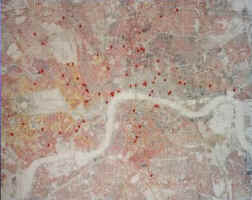1. Charles Booth's Survey into London life and labour

 Between the years 1886 and 1903, the wealthy philanthropic Victorian industrialist Charles Booth (1840-1916) undertook, at his own expense and to his own design, a groundbreaking social survey of London life. Although his Inquiry into the life and labour of the people in London was one of several 19th century London surveys, it is the only one for which the team of interviewers'
original notes and data have survived.
Between the years 1886 and 1903, the wealthy philanthropic Victorian industrialist Charles Booth (1840-1916) undertook, at his own expense and to his own design, a groundbreaking social survey of London life. Although his Inquiry into the life and labour of the people in London was one of several 19th century London surveys, it is the only one for which the team of interviewers'
original notes and data have survived.
These notes were the basis for a number of published works, the last edition of which, Life and labour of the people in London,1 was published in seventeen volumes during 1902 and 1903. But the original notebooks provide a much more detailed account of many aspects of contemporary London life as the published work excluded any information which could identify any of those interviewed or referred to. The interviewing team included several who were later to become well known such as Beatrice Potter (later Webb), George Duckworth, and Clara Collet (daughter of Collet Dobson Collet, the editor of Urquhart's The Free Press who was referred to by Karl Marx as 'Urquhart's Bulldog').2
450 original notebooks from the survey are held in the Charles Booth Archive at the British Library of Political and Economic Science (housed at the London School of Economics) where, with many other Booth items, they can readily be consulted.
Another outcome of Booth's survey was the Descriptive Map of London Poverty, 1889.3 This comprised maps of London with the buildings on each street differentially coloured to indicate which of a series of economic levels, ranging from poverty to wealth, most closely characterised their inhabitants. The City of London was left uncoloured as the number of residents was considered to be statistically insignificant.
Although Urquhart and his supporters argued that Turkish baths were most needed in areas of poverty, they tended to be established in the better off areas.
This can be seen if red spots are added to Booth's London poverty map to show the location of Turkish baths which opened during Victoria's reign. The map is based on data reflecting the conditions in 1889, when there were 36 known Turkish baths in the area it covers.
Two of Booth's team visited three Turkish baths as part of their survey, one of them visiting two establishments.

